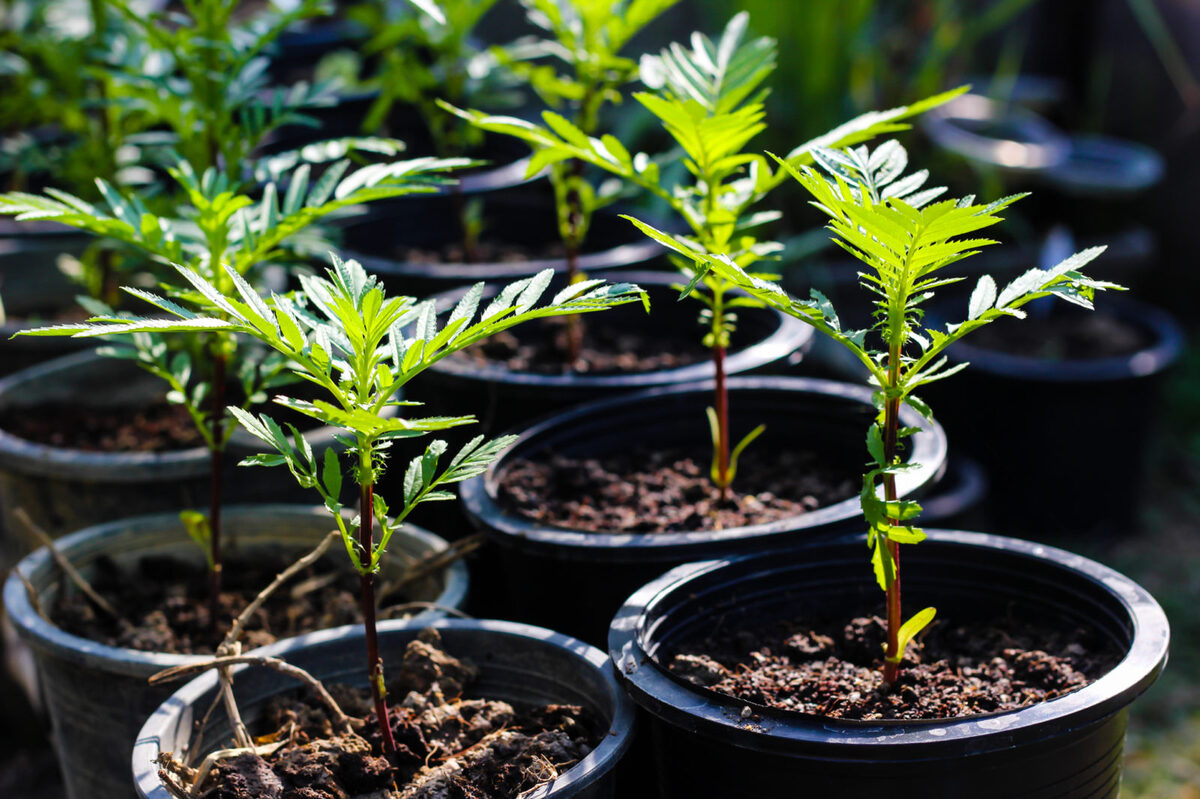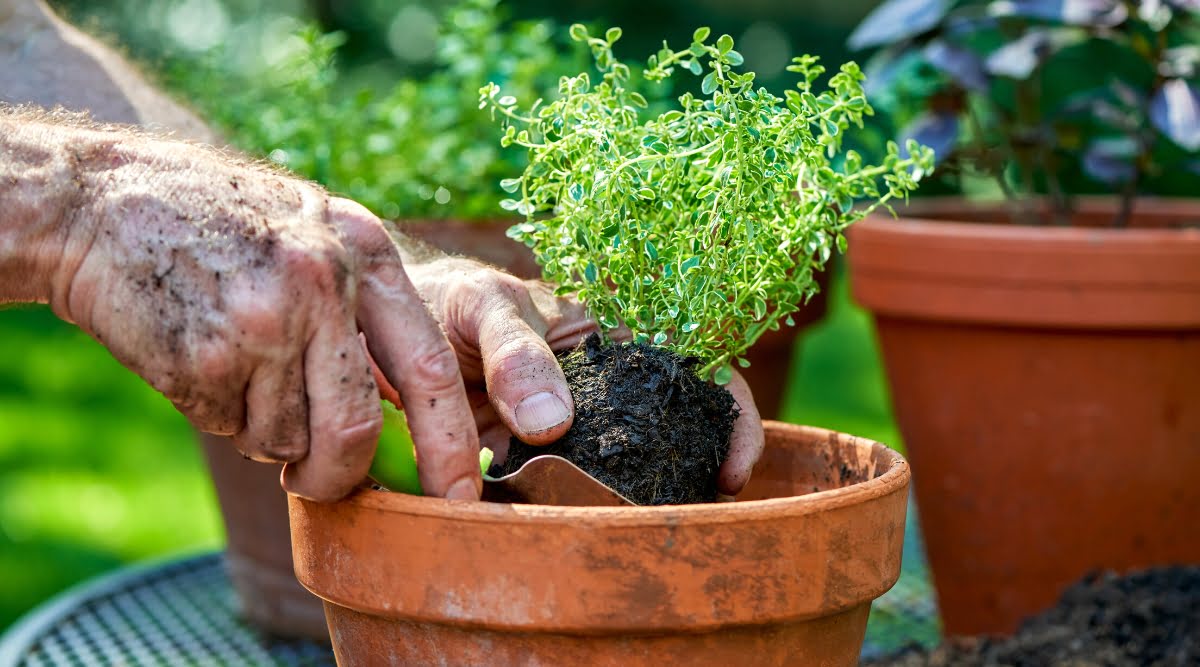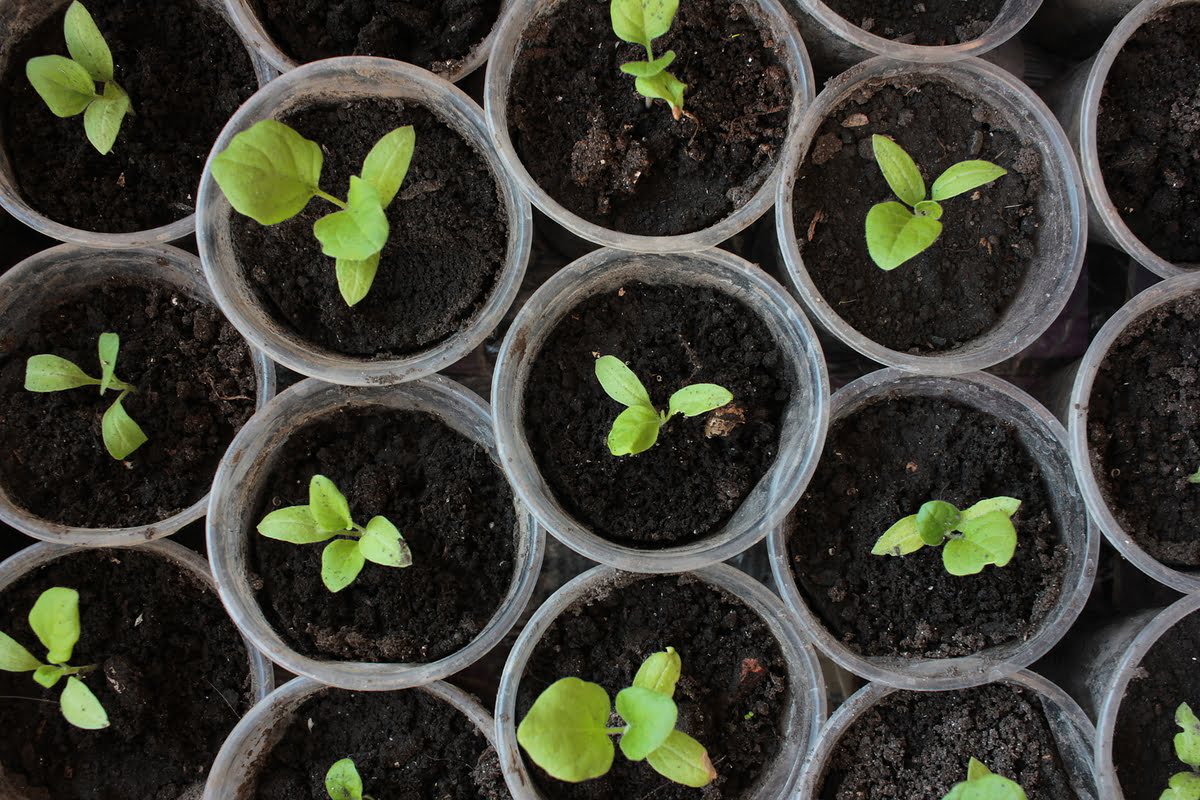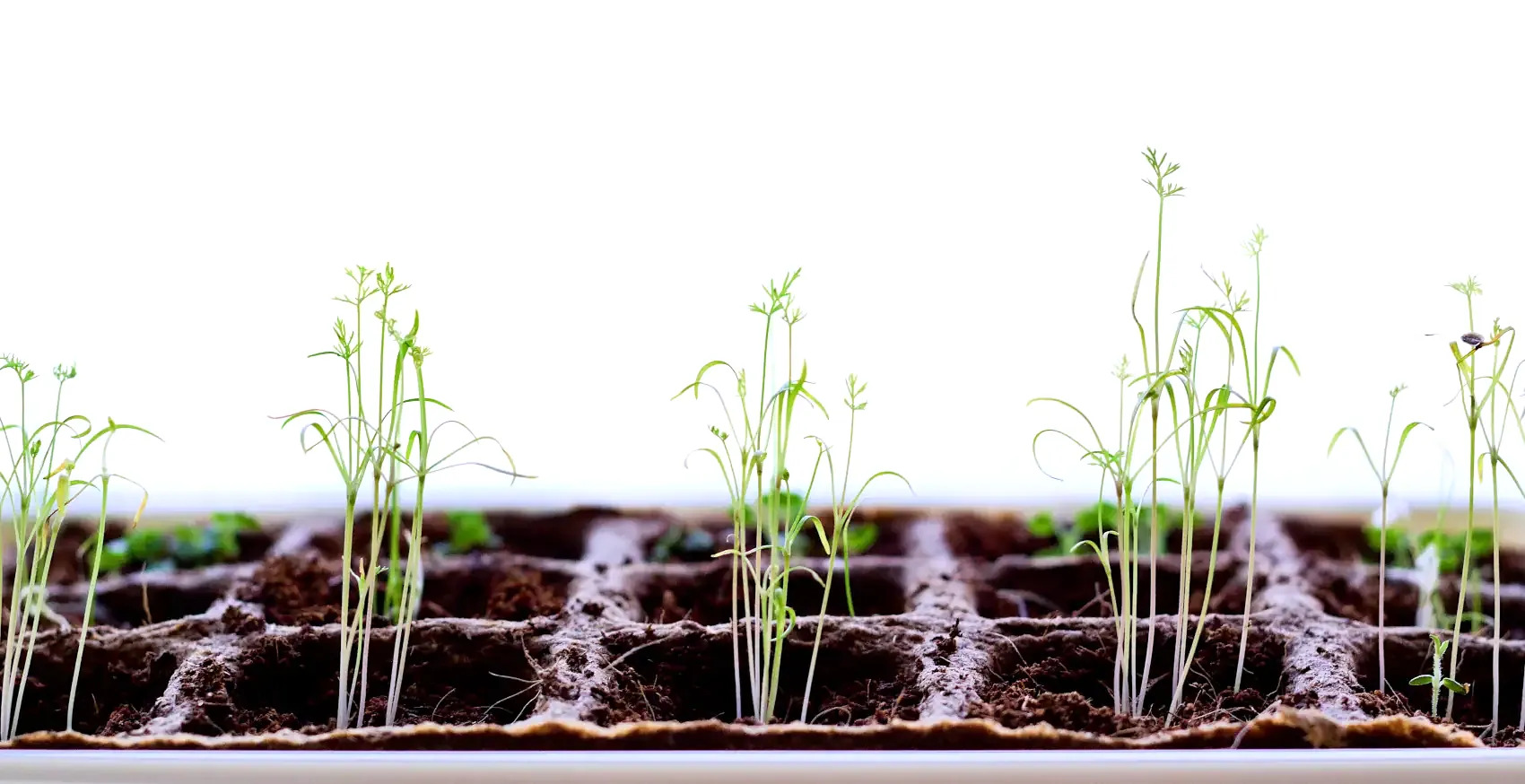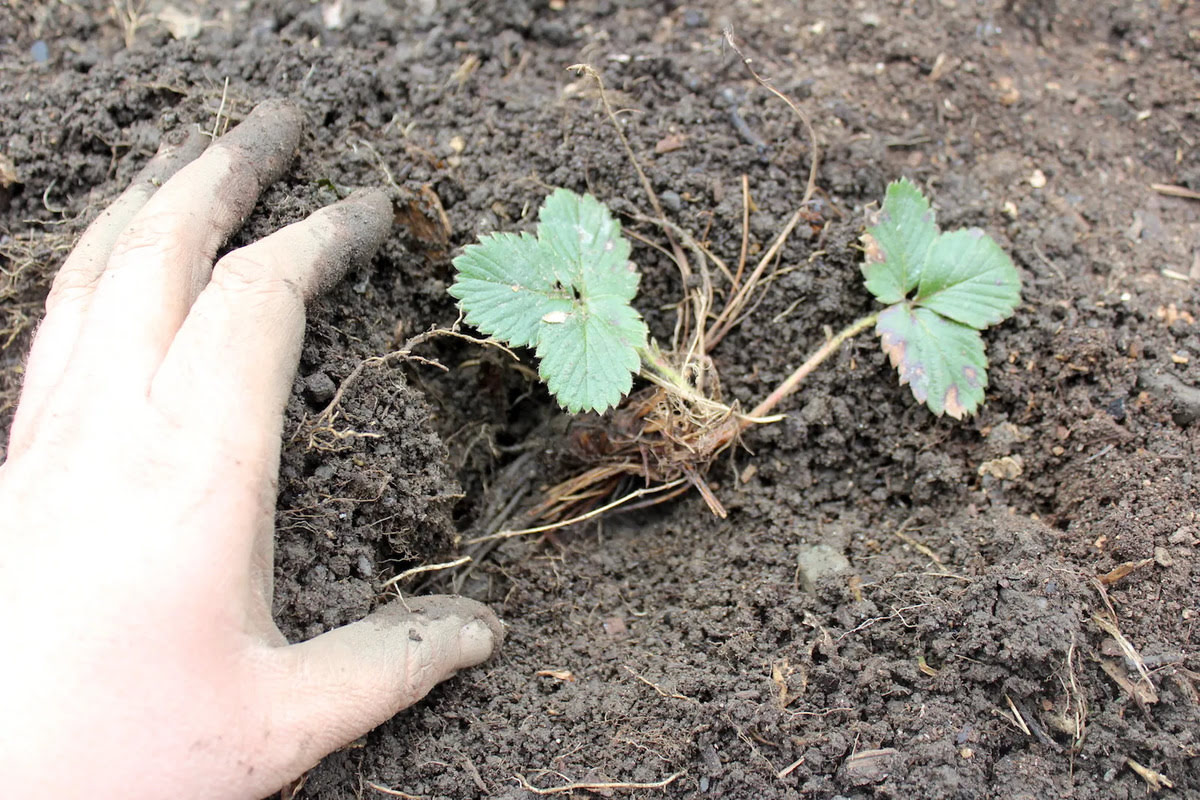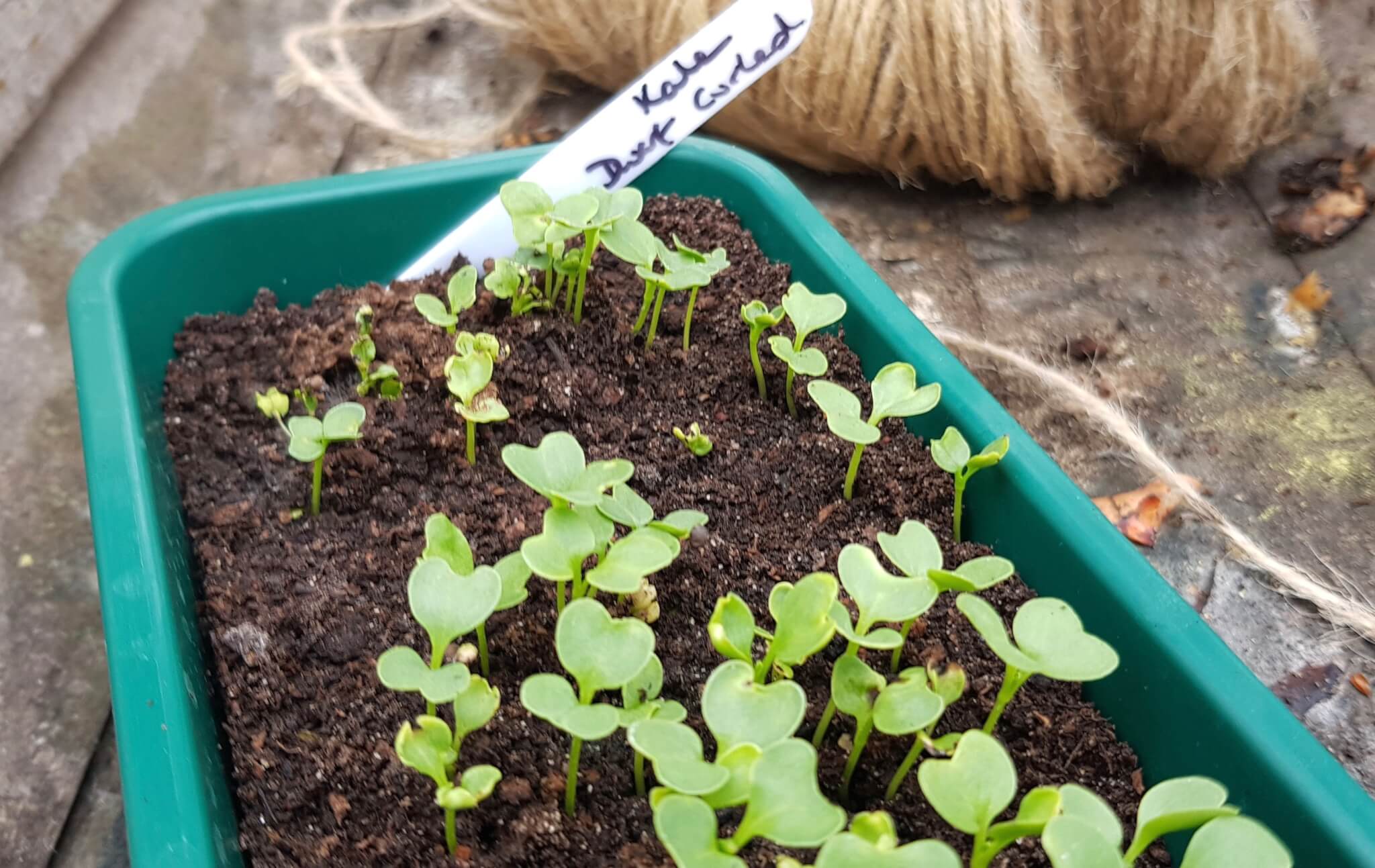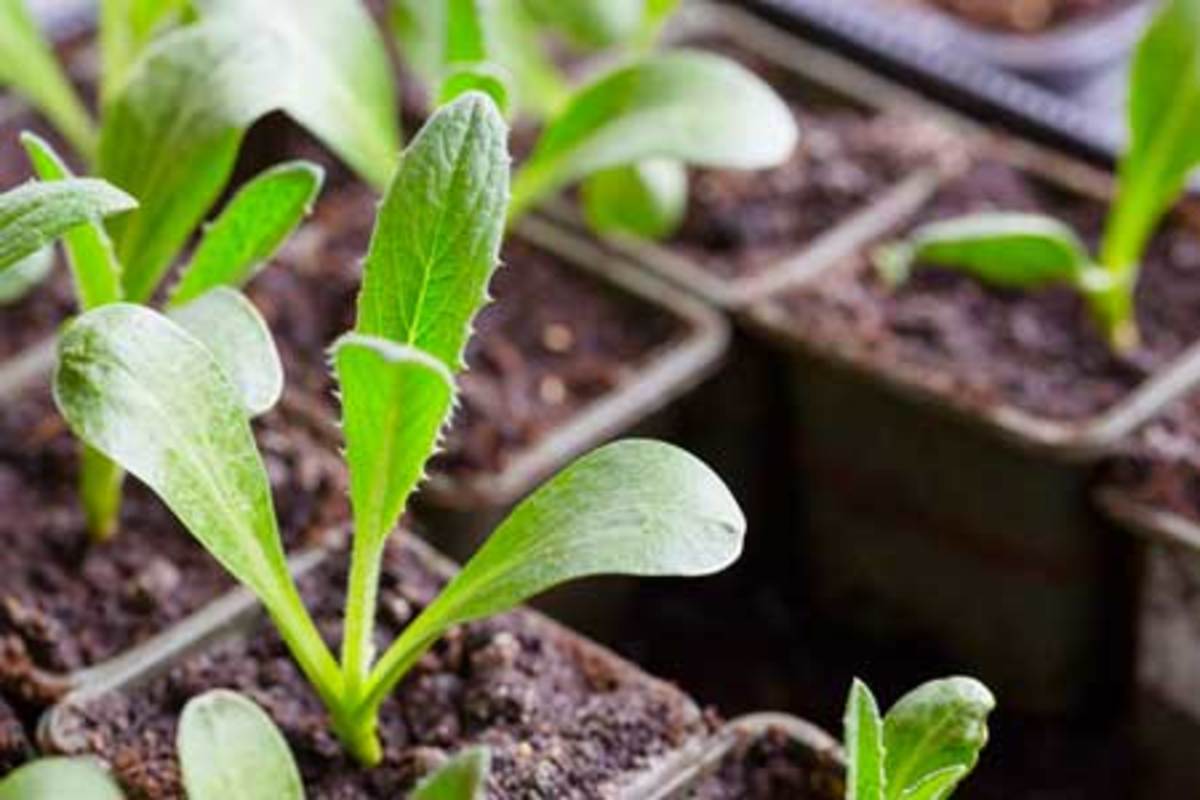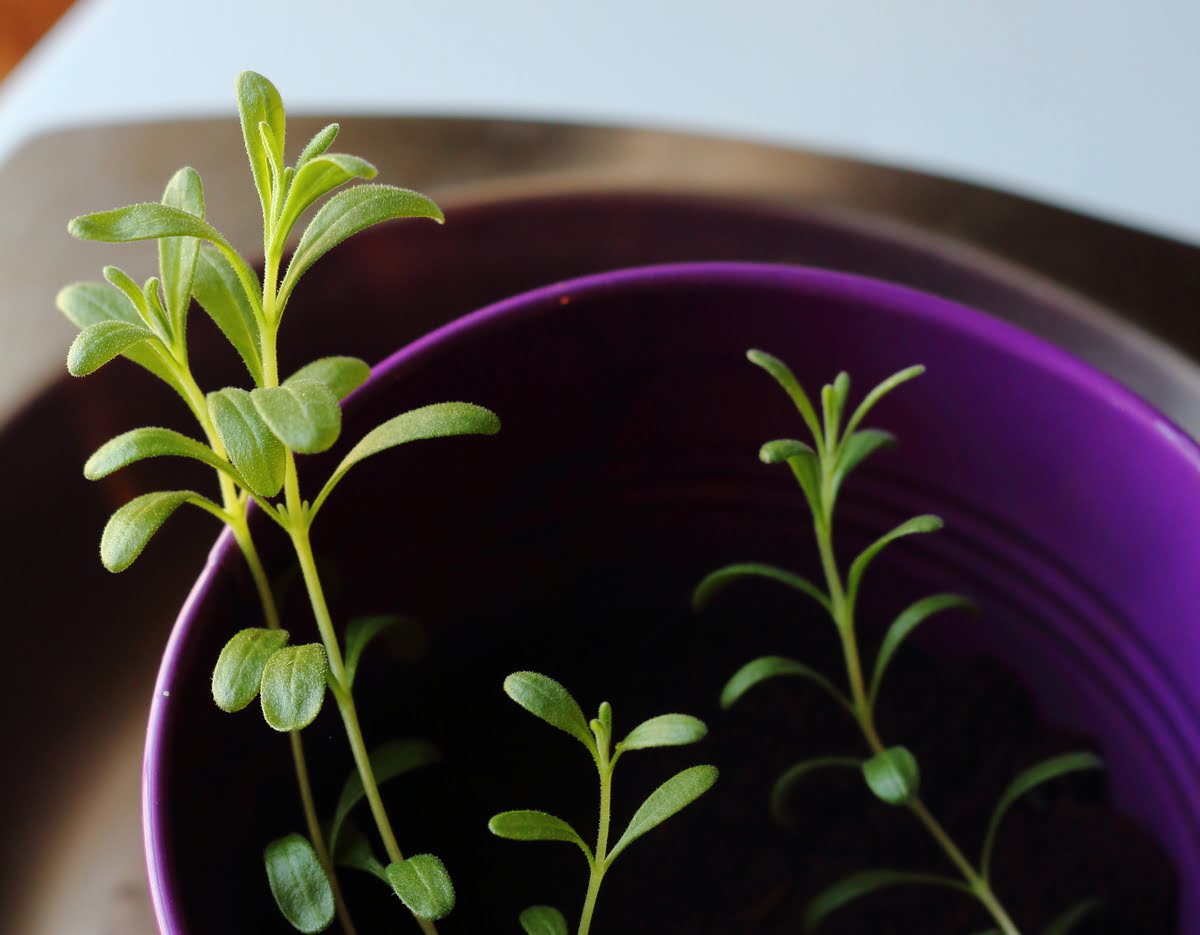Home>Types of Gardening>Edible Gardening>When Should I Transplant Pepper Seedlings
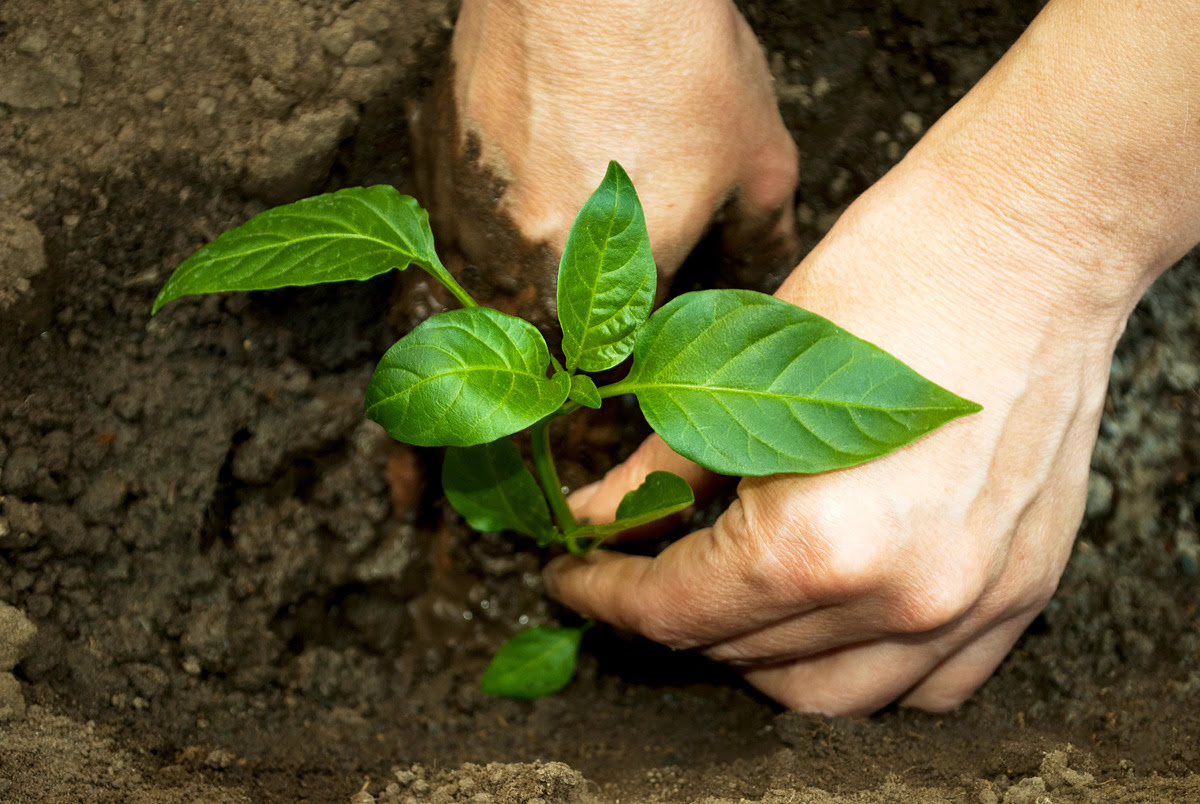

Edible Gardening
When Should I Transplant Pepper Seedlings
Modified: January 22, 2024
Learn when and how to transplant your pepper seedlings in your edible gardening journey. Get expert tips and advice for a successful transplanting process.
(Many of the links in this article redirect to a specific reviewed product. Your purchase of these products through affiliate links helps to generate commission for Chicagolandgardening.com, at no extra cost. Learn more)
Table of Contents
- Introduction
- Understanding Pepper Seedling Transplanting
- Factors to Consider Before Transplanting
- Determining the Right Time to Transplant Pepper Seedlings
- Preparing the Seedlings for Transplanting
- Transplanting Pepper Seedlings
- Caring for Transplanted Pepper Seedlings
- Troubleshooting Common Issues with Transplanted Pepper Seedlings
- Conclusion
Introduction
Are you ready to embark on the journey of growing your own peppers? If so, one of the most critical steps in the process is transplanting pepper seedlings. Transplanting is the act of moving the young plants from their initial container to a larger space, such as a garden bed or a larger pot. This process allows the seedlings to establish stronger roots, ensuring a healthier and more productive pepper plant.
Transplanting pepper seedlings can be a bit nerve-wracking, especially for novice gardeners. However, with the right knowledge and technique, you can successfully transplant your pepper seedlings and set them up for success in their new environment.
In this article, we will guide you through the process of transplanting pepper seedlings and provide helpful tips to ensure their proper growth and development. We will explore the factors to consider before transplanting, how to determine the right time for transplanting, preparing the seedlings for transplanting, the actual transplanting process, and the care needed for the transplanted seedlings.
By the end of this article, you will be equipped with the knowledge and confidence required to transplant your pepper seedlings and witness them thrive in your edible garden. So let’s dive in and learn about the art of transplanting pepper seedlings!
Understanding Pepper Seedling Transplanting
Transplanting pepper seedlings is a crucial step in the growth process, as it allows the young plants to transition from their nursery environment to the final growing location. This step is essential because it provides the seedlings with the space and nutrients they need to develop strong roots and thrive.
When you start pepper seeds indoors, they initially grow in small containers such as seed trays or peat pots. As the seedlings continue to grow, they become crowded in their current containers, which can hinder their overall development. Additionally, the limited space and resources in these small containers can restrict nutrient uptake and increase the risk of root disease.
Transplanting is the solution to these challenges, allowing the pepper seedlings to access more space and nutrients for optimal growth. By carefully moving the seedlings to larger containers or the outdoor garden, you provide them with the ideal conditions to establish a strong root system and thrive in their new environment.
During the transplanting process, the seedlings undergo a period of adjustment as they adapt to their new surroundings. They may experience some stress or shock due to changes in light, temperature, and humidity. However, with proper care and preparation, this stress can be minimized, and the seedlings can quickly recover and resume their growth.
Understanding the importance of transplanting and its impact on the overall health and success of your pepper plants is essential. It enables you to appreciate the significance of this step and take the necessary precautions to ensure the best possible outcome.
Now that we have a clearer understanding of why transplanting pepper seedlings is crucial, let’s delve into the factors you need to consider before embarking on the transplanting journey.
Factors to Consider Before Transplanting
Before you transplant your pepper seedlings, there are several important factors to consider. These factors will help you ensure a smooth and successful transplanting process, setting your seedlings up for healthy growth in their new environment. Let’s explore the key factors to consider:
- Growth Stage: It’s crucial to wait until your pepper seedlings have reached an appropriate growth stage before transplanting. Typically, this is when the seedlings have developed at least two sets of true leaves. Transplanting too early can cause stress and stunted growth, while transplanting too late can lead to root-bound seedlings.
- Weather Conditions: Pay close attention to the weather forecast before transplanting. Pepper seedlings are sensitive to extreme temperatures, both cold and hot. Ideally, choose a day with mild temperatures, overcast skies, and minimal wind. Avoid transplanting during heatwaves or when frost is still a possibility.
- Soil Preparation: The quality of the soil plays a vital role in the success of your transplanted pepper seedlings. Ensure that the soil in the garden bed or container is well-draining and rich in organic matter. Consider conducting a soil test to determine if any amendments, such as compost or fertilizers, are needed to create the optimal growing conditions for your peppers.
- Transplanting Location: Choose the planting location for your pepper seedlings wisely. Peppers thrive in full sun, so select a spot that receives at least 6-8 hours of direct sunlight per day. Additionally, ensure that the location offers protection from strong winds, as these can damage the tender young plants.
- Transplanting Container: If you are transplanting your seedlings into containers, make sure they are clean and have adequate drainage holes. Proper drainage is crucial to prevent waterlogged soil, which can lead to root rot. Select containers that are large enough to accommodate the root system of the pepper plants.
- Watering and Hardening Off: In the days leading up to transplanting, gradually reduce the amount of water your seedlings receive. This process, known as hardening off, helps the seedlings adjust to outdoor conditions and reduces the risk of transplant shock. Gradually expose them to outdoor conditions by placing them outside for a few hours each day, gradually increasing the duration over a week.
By considering these factors before transplanting your pepper seedlings, you will ensure that they have the best possible start in their new environment. Taking the time to prepare and create favorable conditions will greatly increase their chances of thriving and producing a bountiful pepper harvest.
Determining the Right Time to Transplant Pepper Seedlings
Timing is crucial when it comes to transplanting pepper seedlings. Transplanting them too early or too late can result in stunted growth or damage to the delicate plants. So, how do you determine the right time to transplant your pepper seedlings? Here are some key considerations:
Seedling Development: The growth stage of your pepper seedlings is an essential factor to consider. As mentioned earlier, wait until your seedlings have developed at least two sets of true leaves before transplanting. This indicates that their root system is developing, making them better equipped to handle the transition.
Local Climate: Understanding the climate in your specific location is crucial for transplanting success. Pepper plants thrive in warm weather, so wait until the threat of frost has passed before transplanting them outside. If you’re in a cooler climate, you can start your seedlings indoors several weeks before the last frost date to give them a head start.
Soil Temperature: The temperature of the soil plays a significant role in determining when to transplant pepper seedlings. The soil should have warmed up sufficiently for the peppers to establish their roots. Aim for a soil temperature of around 60°F (15.5°C) or higher before you transplant your seedlings.
Outdoor Conditions: Consider the current and forecasted outdoor conditions. Extreme heat or cold can stress the seedlings, so wait for milder weather to transplant them. Ideally, choose a cloudy or overcast day to increase their chances of adjusting to their new environment more easily.
Transplanting Schedule: If you plan to transplant your seedlings into a greenhouse or protected environment, you can do so earlier than if you’re transplanting them directly into the garden. The controlled conditions in a greenhouse provide additional protection, allowing for earlier transplanting.
Planting Space: Ensure that you have prepared the planting space before transplanting your peppers. Clear any weeds, loosen the soil, and amend it with compost or organic matter if necessary. This way, the seedlings can be placed into their new home immediately after transplanting.
By considering these factors and assessing the specific conditions in your area, you can determine the ideal timing to transplant your pepper seedlings. Remember, patience is key, and it’s better to wait for the optimal conditions than to rush the process. With careful timing, your transplanted pepper seedlings will have a much higher chance of thriving in their new home.
Preparing the Seedlings for Transplanting
Properly preparing your pepper seedlings for transplanting is essential to ensure their successful establishment in their new environment. Taking the time to prepare them adequately will minimize transplant shock and give them the best start for healthy growth. Here are important steps to follow when preparing your seedlings for transplanting:
- Watering: Prior to transplanting, thoroughly water the seedlings. This ensures that the soil is moist and helps to minimize stress when removing them from their current containers. Avoid watering excessively, as oversaturated soil can make it challenging to handle the seedlings during transplanting.
- Loosening the Roots: Gently loosen the root system of each seedling before transplanting. This promotes better root development and allows the roots to spread out more easily when transplanted into their new location. Use your fingers to carefully massage the root ball, avoiding excessive damage.
- Hardening Off: If your seedlings have been growing indoors or in a protected environment, they need to acclimate to the outdoor conditions gradually. This process, known as hardening off, prepares the seedlings for the changes in temperature, sunlight, and wind. Start by placing the seedlings outside in a sheltered area for a few hours each day, gradually increasing the duration over the course of a week. This gradual exposure helps the seedlings adjust to the outdoor environment and reduces the risk of transplant shock.
- Trimming: If your seedlings have grown tall and leggy, you can trim them back slightly before transplanting. This helps to balance the growth and reduce the strain on the seedlings as they establish themselves in their new environment. Only trim a small amount, focusing on removing any excessively long or weak stems.
- Timing: As discussed in the previous section, ensure that you are choosing the right time to transplant your seedlings. Consider the growth stage, local climate, soil temperature, and outdoor conditions to determine the ideal timing. Transplanting at the right time gives the seedlings the best chance of thriving.
- Labeling: Before transplanting, make sure to label your pepper plants. This will help you keep track of the different varieties and avoid confusion once they are transplanted. Use plant markers or labels to ensure accurate identification.
By following these steps and adequately preparing your seedlings for transplanting, you will set them up for success in their new environment. Proper watering, loosening the roots, hardening off, trimming if necessary, and ensuring the timing is right are crucial aspects to consider. With these preparations in place, your pepper seedlings will have a smooth transition and be well on their way to thriving in your garden.
Transplanting Pepper Seedlings
Transplanting your pepper seedlings is an exciting step in the journey of growing your own peppers. This is where you carefully move the seedlings from their current containers to their permanent location, whether it’s a garden bed, raised bed, or larger pots. Follow these steps to ensure a successful transplanting process:
- Prepare the Transplanting Site: Before removing the seedlings from their containers, prepare the transplanting site. Clear away any weeds or debris, loosen the soil, and amend it with compost or organic matter if needed. Ensure that the location provides the optimal amount of sunlight and has proper drainage.
- Water the Seedlings: Give the seedlings a thorough watering before transplanting. This helps keep the root ball intact and prevents them from drying out during the transplanting process.
- Remove the Seedlings: Carefully remove the seedlings from their containers, holding onto the seedling and avoiding pulling on the delicate stems. Gently loosen the root ball if it appears tightly packed.
- Dig the Planting Hole: Dig a hole in the transplanting site that is slightly larger than the root ball of the seedling. Make sure the hole is deep enough to bury the seedling up to its first set of leaves.
- Place the Seedlings: Carefully place each seedling in the planting hole, ensuring that it is centered and upright. Adjust the depth as necessary to align the seedling’s first set of leaves with the soil surface.
- Backfill and Firm the Soil: Gently fill the hole with soil, firming it around the base of the seedling to provide stability. Avoid compacting the soil too firmly, as this can hinder root growth. Leave a slight depression around the seedling to help catch and retain water.
- Water Thoroughly: Give the transplanted seedlings a thorough watering to settle the soil around the roots and promote root establishment. Watering after transplanting helps minimize transplant shock and provides essential hydration.
- Mulch: Apply a layer of organic mulch, such as straw or wood chips, around the base of the pepper seedlings. Mulching helps conserve moisture, suppress weeds, and regulate soil temperature, creating a favorable environment for the transplanted seedlings.
Remember to handle the seedlings with care during the entire transplanting process. Take your time and be mindful of any damage to the roots or stems. By following these steps, you will ensure that your transplanted pepper seedlings have a smooth transition to their new home and have the best chance of thriving.
Caring for Transplanted Pepper Seedlings
After transplanting your pepper seedlings, it’s important to provide proper care to ensure their healthy growth and development. Here are some essential steps to follow when caring for your transplanted pepper seedlings:
- Watering: Keep the soil consistently moist but not waterlogged. Water the seedlings deeply, allowing the water to reach the root zone. Avoid overwatering, as excessive moisture can lead to root rot. Regularly check the soil moisture and adjust your watering schedule accordingly.
- Mulching: Maintain a layer of organic mulch around the base of the pepper plants to help conserve moisture and suppress weed growth. This will provide a protective barrier for the roots, regulate soil temperature, and reduce water evaporation.
- Fertilizing: Use a balanced organic fertilizer or compost to provide necessary nutrients to the pepper plants. Follow the package instructions for application rates and frequency. Avoid excessive use of nitrogen-rich fertilizers, as this can result in lush foliage growth but fewer fruits.
- Supporting: As your pepper plants grow, they may require support to prevent them from falling over due to their weight or wind. Depending on the variety, you can use stakes, cages, or trellises to provide support for the plants. Secure the support structures firmly in the ground, being careful not to damage the root system.
- Pruning: Regularly check for suckers (new growth emerging from the leaf axils) and remove them to promote better air circulation and fruit production. Pruning can also help redirect the plant’s energy towards developing larger and healthier fruits. Be cautious not to remove too much foliage, as the plant needs leaves for photosynthesis.
- Pest and Disease Control: Monitor your plants regularly for any signs of pests or diseases. Look for common pepper pests like aphids, whiteflies, or caterpillars. If detected, treat them with organic pest control methods such as neem oil or insecticidal soap. Prevent diseases by spacing your plants adequately for good air circulation and avoiding overhead watering.
- Provide Adequate Sunlight: Ensure that your pepper plants receive a minimum of 6-8 hours of direct sunlight per day. If necessary, prune nearby plants or structures that may cast shade on your pepper plants. Proper sunlight exposure is crucial for their growth, flowering, and fruit development.
- Maintain Weed Control: Regularly remove any weeds that compete with your pepper plants for nutrients, water, and sunlight. Weeds can also serve as hosts for pests and diseases. Mulching around the plants will help suppress weed growth, but it’s essential to stay vigilant and remove any weeds that emerge.
- Monitor and Adjust: Observe your pepper plants closely, keeping an eye out for any signs of stress, nutrient deficiencies, or irregular growth. Make adjustments to watering, fertilizing, or pest control methods as needed. Prompt action can prevent any potential issues from escalating and impacting the overall plant health.
By providing proper care and attention to your transplanted pepper seedlings, you will support their growth, help them establish strong root systems, and ensure a bountiful harvest of delicious peppers.
Troubleshooting Common Issues with Transplanted Pepper Seedlings
While transplanting pepper seedlings can be an exciting experience, it’s not uncommon to encounter some issues along the way. Here are some common problems you may face with transplanted pepper seedlings and how to troubleshoot them:
- Transplant Shock: Transplant shock occurs when seedlings undergo stress due to changes in their environment. To minimize transplant shock, ensure that you water the seedlings thoroughly before transplanting, handle them gently during the process, and provide proper aftercare such as regular watering, mulching, and monitoring for signs of stress.
- Wilting: If your transplanted pepper seedlings are wilting, this may be a sign of underwatering, overwatering, or root damage during transplanting. Check the soil moisture level and adjust your watering accordingly. If the soil is consistently moist, it’s possible that the roots may have been damaged during transplanting. In such cases, providing shade or creating a humid microclimate around the plants can help them recover.
- Stunted Growth: Stunted growth in transplanted pepper seedlings can be due to a lack of nutrients, improper watering, or inadequate sunlight. Ensure that you are providing the appropriate amount of water, fertilizing as needed, and giving your plants enough sunlight. Adjusting these factors can help your seedlings regain their growth momentum.
- Leaf Curling: Leaf curling in pepper seedlings can be caused by various factors, including heat stress, lack of water, nutrient deficiencies, or pests. Check the environmental conditions and ensure that your seedlings are receiving adequate water and nutrients. Keep an eye out for pests like aphids or spider mites and treat them promptly. Providing shade during hot periods may help alleviate heat stress.
- Yellowing Leaves: Yellowing leaves in transplanted pepper seedlings can indicate nutrient deficiencies, overwatering, or root issues. Conduct a soil test to check for nutrient imbalances and provide appropriate fertilization. Adjust your watering to ensure proper drainage and avoid waterlogging. In some cases, yellowing leaves may be a natural process of older leaves dying off.
- Pest Infestations: Pepper seedlings can be susceptible to pests such as aphids, whiteflies, or caterpillars. Monitor your plants regularly for signs of infestations and take appropriate measures to control them. Consider using organic pest control methods like neem oil or insecticidal soap to manage pests effectively.
- Disease: Diseases like fungal infections or bacterial wilt can impact transplanted pepper seedlings. Practice proper sanitation, ensure good air circulation, and avoid overhead watering to prevent the spread of diseases. If disease symptoms persist, consider removing and disposing of severely affected plants to prevent further spread.
- Inadequate Fruit Set: If your transplanted pepper plants are not setting fruit, it could be due to various reasons such as insufficient pollination, temperature extremes, or improper watering. Provide access to pollinators by planting flowers nearby or gently shaking the plants to aid in pollination. Ensure that the temperature is within the optimal range for fruit set, and maintain consistent watering practices to support fruit development.
Remember that each issue may require specific solutions, and it’s important to address them promptly. By troubleshooting these common problems, you can ensure the health and vitality of your transplanted pepper seedlings, leading to a successful and abundant pepper harvest.
Conclusion
Transplanting pepper seedlings is a crucial step in the journey of growing your own peppers. By understanding the process and following the necessary steps, you can ensure the healthy growth and development of your transplanted seedlings. Factors such as timing, proper preparation, and care are key to successful transplanting.
Before transplanting, consider the growth stage of the seedlings, local climate, soil temperature, and outdoor conditions to determine the optimal time for transplanting. Prepare the seedlings by watering them adequately, loosening the roots, and gradually acclimating them to outdoor conditions.
During the transplanting process, handle the seedlings with care and properly place them in the prepared location. Water the seedlings thoroughly to settle the soil around the roots and provide necessary hydration. Mulching, fertilizing, and providing support and proper sunlight are essential for their ongoing care.
Keep an eye out for common issues like transplant shock, wilting, stunted growth, leaf curling, yellowing leaves, pests, diseases, and inadequate fruit set. Troubleshoot these issues by adjusting watering, enhancing soil nutrition, addressing nutrient deficiencies, controlling pests, and providing shade or protection when necessary.
Remember that each pepper plant is unique, and you may encounter different challenges along the way. By being observant, responsive, and proactive in caring for your transplanted pepper seedlings, you can overcome these challenges and set the stage for a successful and rewarding pepper-growing season.
So, unleash your green thumb, enjoy the journey of growing your own peppers, and savor the delightful flavors that await you in your edible garden!

